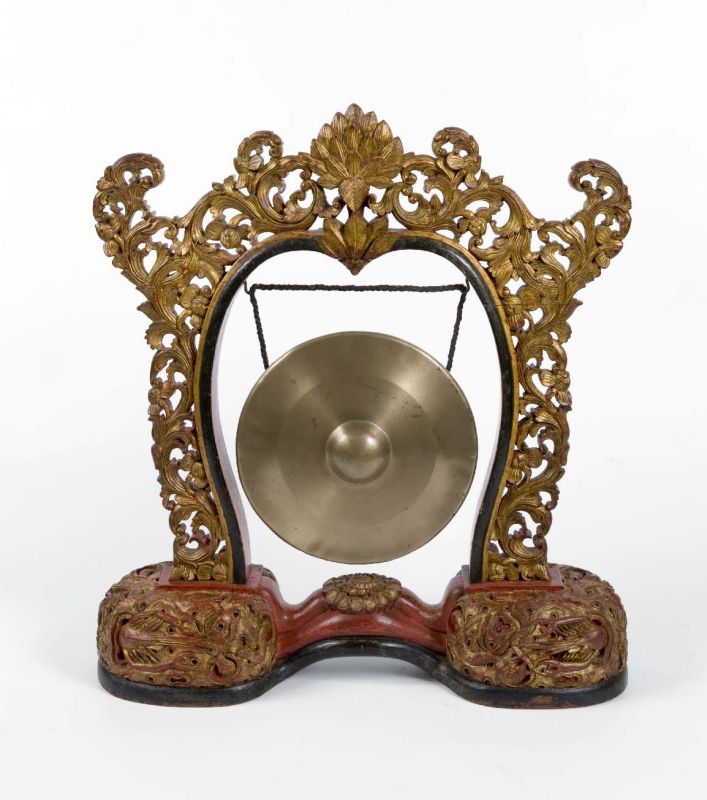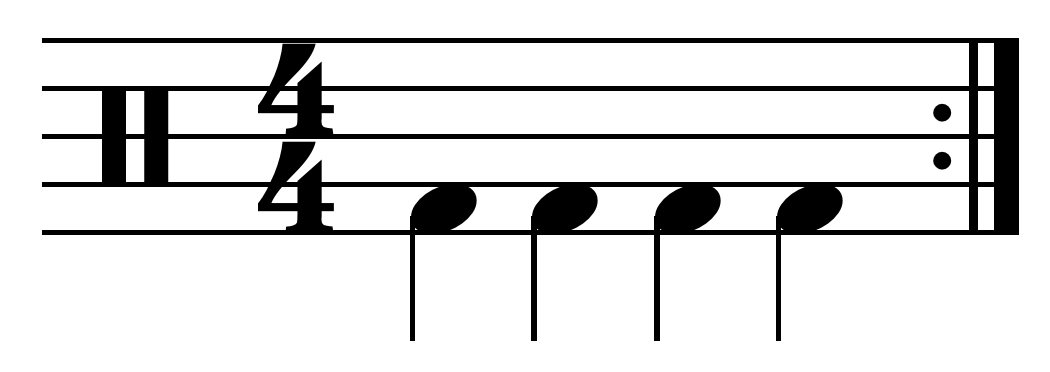|
Sensemayá
''Sensemayá'' is a composition for orchestra by the Mexican composer Silvestre Revueltas, which is based on the poem of the same title by the Cuban poet Nicolás Guillén. It is one of Revueltas's most famous compositions. Poem Guillén's poem evokes a ritual Afro-Caribbean chant performed while killing a snake: : The poem "Sensemayá" is based on Afro-Cuban religious cults, preserved in the cabildos, self-organized social clubs for the African slaves. African religions were transmitted from generation to generation. In this poem we meet an adept known as the ''mayombero''. He is knowledgeable in the area of herbal medicine, as well as being the leader of rituals. In ''Sensemayá'', the mayombero leads a ritual which offers the sacrifice of a snake to a god. One of the main motives in ''Sensemayá'' is based on this word ''mayombero''. This chant "mayombe, bombe mayombé", is an example of Guillén's use of repetition, derived from an actual ceremony. Orchestral composition R ... [...More Info...] [...Related Items...] OR: [Wikipedia] [Google] [Baidu] |
Silvestre Revueltas
Silvestre Revueltas Sánchez (December 31, 1899 – October 5, 1940) was a Mexican classical music composer, a violinist, and conductor. Life Revueltas was born in Santiago Papasquiaro in Durango, and studied at the National Conservatory of Music of Mexico, National Conservatory in Mexico City, St. Edward's University in Austin, Texas, and the Chicago College of Music. He gave violin recitals and in 1929 was invited by Carlos Chávez to become assistant conductor of the National Symphony Orchestra (Mexico), National Symphony Orchestra of Mexico, a post he held until 1935. He and Chávez did much to promote contemporary Mexican music. It was around this time that Revueltas began to compose in earnest. He began his first film score, Redes (Revueltas), ''Redes'', in 1934, a commission which resulted in Revueltas and Chávez falling out. Chávez had originally expected to write the score, but political changes led to him losing his job in the Secretariat of Public Education (Mexico) ... [...More Info...] [...Related Items...] OR: [Wikipedia] [Google] [Baidu] |
Nicolás Guillén
Nicolás Cristóbal Guillén Batista (10 July 1902 – 16 July 1989) was a Cuban poet, journalist and political activist. He is best remembered as the national poet of Cuba.Associated Press, "Nicolas Guillen, 87, National Poet of Cuba" ''The New York Times'', 18 July 1990: A19. Born in , Cuba, he studied law at the , but abandoned a legal career and worked as both a typographer and journalist. His poetry was published in various magazines from the early 1920s; his fi ... [...More Info...] [...Related Items...] OR: [Wikipedia] [Google] [Baidu] |
Tuba
The tuba (; ) is the largest and lowest-pitched musical instrument in the brass instrument, brass family. As with all brass instruments, the sound is produced by lip vibrationa buzzinto a mouthpiece (brass), mouthpiece. It first appeared in the mid-19th century, making it one of the newer instruments in the modern orchestra and concert band, and largely replaced the ophicleide. ''Tuba'' is Latin for "trumpet". A person who plays the tuba is called a tubaist, a tubist, or simply a tuba player. In a British Brass band (British style), brass band or military band, they are known as bass players. History Prussian Patent No. 19 was granted to Wilhelm Friedrich Wieprecht and Johann Gottfried Moritz on 12 September 1835 for a "bass tuba" in F1. The original Wieprecht and Moritz instrument used five valves of the Brass instrument valve#Double-piston valve, Berlinerpumpen type that was the forerunner of the modern piston valve. The first tenor tuba was invented in 1838 by Moritz's ... [...More Info...] [...Related Items...] OR: [Wikipedia] [Google] [Baidu] |
Mexico
Mexico, officially the United Mexican States, is a country in North America. It is the northernmost country in Latin America, and borders the United States to the north, and Guatemala and Belize to the southeast; while having maritime boundary, maritime boundaries with the Pacific Ocean to the west, the Caribbean Sea to the southeast, and the Gulf of Mexico to the east. Mexico covers 1,972,550 km2 (761,610 sq mi), and is the List of countries by area, thirteenth-largest country in the world by land area. With a population exceeding 130 million, Mexico is the List of countries by population, tenth-most populous country in the world and is home to the Hispanophone#Countries, largest number of native Spanish speakers. Mexico City is the capital and List of cities in Mexico, largest city, which ranks among the List of cities by population, most populous metropolitan areas in the world. Human presence in Mexico dates back to at least 8,000 BC. Mesoamerica, considered a cradle ... [...More Info...] [...Related Items...] OR: [Wikipedia] [Google] [Baidu] |
Gong
A gongFrom Indonesian language, Indonesian and ; ; zh, c=鑼, p=luó; ; ; ; ; is a percussion instrument originating from Southeast Asia, and used widely in Southeast Asian and East Asian musical traditions. Gongs are made of metal and are circular and flat or bowl-like in shape, and can come in various sizes. They are typically struck with a mallet. They can be played alone, giving a characteristic "crashing" sound, or played as part of a tuned set that produce bell-like sounds. The earliest possible depictions of gongs is from the details on the surface of the Ngọc Lũ I Dong son drum, bronze drum () from the Dong Son culture of northern Vietnam. It depicts what looks like seven-gong ensembles along with other instruments (including cymbals/bells and the bronze drums themselves). The oldest undisputed historical mention of gongs can be found in sixth century AD Chinese records, which mentioned it as a foreign instrument that came from a country between Tibet and Bur ... [...More Info...] [...Related Items...] OR: [Wikipedia] [Google] [Baidu] |
Cymbal
A cymbal is a common percussion instrument. Often used in pairs, cymbals consist of thin, normally round plates of various alloys. The majority of cymbals are of indefinite pitch, although small disc-shaped cymbals based on ancient designs sound a definite note (such as crotales). Cymbals are used in many ensembles ranging from the orchestra, percussion ensembles, jazz bands, heavy metal bands, and marching groups. Drum kits usually incorporate at least a crash, ride, or crash/ride, and a pair of hi-hat cymbals. A player of cymbals is known as a cymbalist. Etymology and names The word cymbal is derived from the Latin , which is the latinisation , which in turn derives . In orchestral scores, cymbals may be indicated by the French ; German , , , or ; Italian or ; and Spanish . Many of these derive from the word for plates. History Cymbals have existed since ancient times. Representations of cymbals may be found in reliefs and paintings from Armenian Highlands (7t ... [...More Info...] [...Related Items...] OR: [Wikipedia] [Google] [Baidu] |
Tom-tom Drum
A tom drum (also known as a tom-tom) is a cylindrical drum with no snares, named from the Anglo-Indian and Sinhala language. It was added to the drum kit in the early part of the 20th century. Most toms range in size between in diameter, though floor toms can go as large as . Design history The drum called "Thammattama", played by the Sinhalese people of Sri Lanka, is used in a number of Buddhist rituals in that country. It is commonly heard in Theravada Buddhist temple Vihāras paired along with the reed instrument called horanava. This may be etymologically derived from the Tamil term "Thappattam" or "Thappu", a frame drum associated with South Indian Tamil culture. However, the tom-tom drums on the Western drum set clearly resemble the Sri Lankan version more than the frame drum. The British colonists complained loudly about the noise generated by the "tom-toms" of the natives throughout South Asia. It is likely that the term tom-toms thus comes from their experiences ... [...More Info...] [...Related Items...] OR: [Wikipedia] [Google] [Baidu] |
Bass Drum
The bass drum is a large drum that produces a note of low definite or indefinite pitch. The instrument is typically cylindrical, with the drum's diameter usually greater than its depth, with a struck head at both ends of the cylinder. The heads may be made of calfskin or plastic and there is normally a means of adjusting the tension, either by threaded taps or by strings. Bass drums are built in a variety of sizes, but size does not dictate the volume produced by the drum. The pitch and the sound can vary much with different sizes,Norman Del Mar, Del Mar, Norman (1981). ''Anatomy of the Orchestra''. . but the size is also chosen based on convenience and aesthetics. Bass drums are percussion instruments that vary in size and are used in several musical genres. Three major types of bass drums can be distinguished. * The type usually seen or heard in orchestral, ensemble or concert band music is the orchestral, or concert bass drum (in Italian: gran cassa, gran tamburo). It is the ... [...More Info...] [...Related Items...] OR: [Wikipedia] [Google] [Baidu] |
Reco-reco
The reco-reco (also called the raspador, caracaxá or querequexé) is a scraper of African origin used as a percussion instrument in Brazilian music,ROCCA, Edgar Nunes "Bituca", ''Escola Brasileira de Música: Uma visão Brasileira no ensino da música e seus instrumentos de percussão 1''. Rio de Janeiro: Europa, EBM, 1986 but also in many Latin American countries, where it is known as güiro, güira, guayo and guacharaca. Traditionally, the reco-reco was made from a sawtooth notched cylindrical body made of bamboo or wood, and played with a wooden stick. The instrument is used in many styles of Brazilian music, such as samba and related genres. For some time, reco-recos have been made of a metallic cylinder with spring (device), springs attached and played with a metal stick, which results in a much louder sound. In some models, the sound box has a hole on the bottom part, which can be covered with the hand to achieve different timbral possibilities. Nowadays, reco-recos have al ... [...More Info...] [...Related Items...] OR: [Wikipedia] [Google] [Baidu] |




